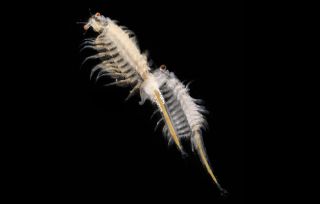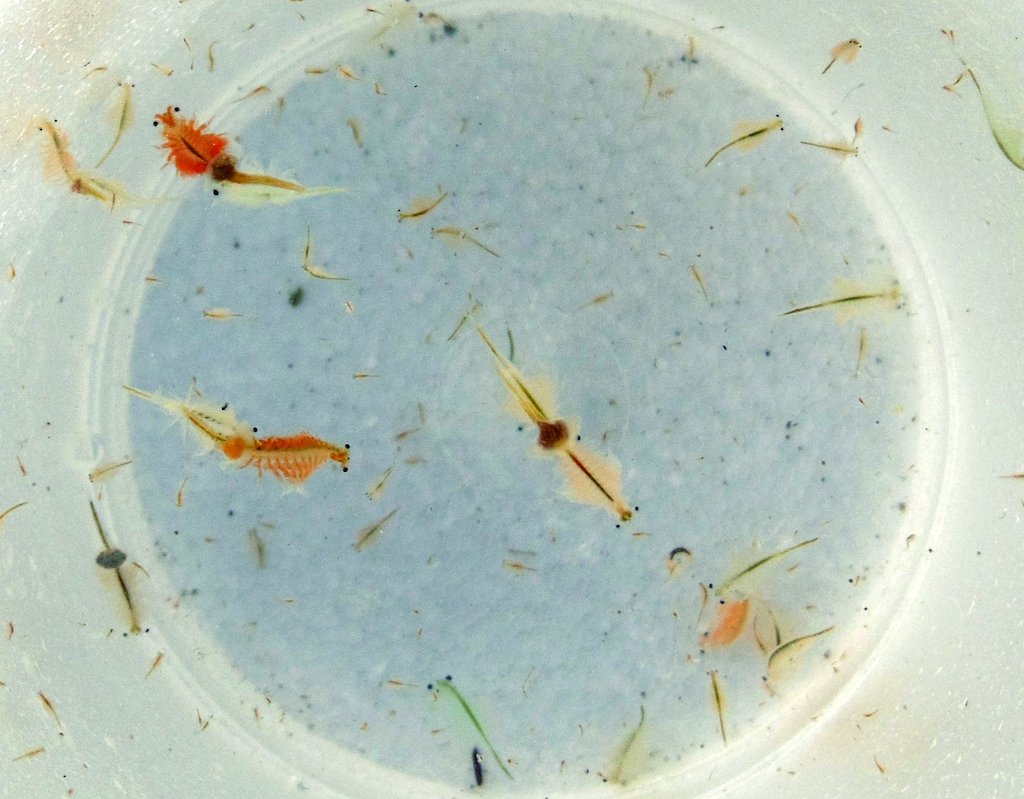Who Sees the Song Upon the Mountain Down in the Sea Below is Easy to Lose Yourself Control
What are Sea-Monkeys?

Sea-Monkeys are a product invented in the 1950s. They're an artificial breed of brine shrimp. They're creatures that spring to life the second magical dust touches water. They're a cult sensation. But, what are Sea-Monkeys exactly?
Despite their name, they're not monkeys. And they don't live in the sea.
Sea-Monkeys are a hybrid breed of brine shrimp called Artemia NYOS produced in 1957 by Harold von Braunhut, according to the journal American Entomologist (opens in new tab). Initially marketed as "Instant Life," Sea-Monkeys are sold in hatching kits as novelty aquarium pets. An instant hit, they remain popular to this day.
The inspiration behind Sea-Monkeys came from a trip to a pet store, according to the Sea-Monkeys website (opens in new tab). When von Braunhut saw brine shrimp being used as fish food, he believed they could serve a greater purpose– to teach children about nature. This led to him experimenting in his laboratory to find ways to preserve the brine shrimp and then bring them back to life. The method to exactly how these pets achieve this is kept secret for commercial purposes.
According to EMBO Reports (opens in new tab), the creatures, whose tails remotely resemble those of monkeys, are derived from crustaceans that undergo "cryptobiosis." This means they can enter a state of suspended animation in times of adverse environmental conditions, and stay in that state indefinitely, until conditions improve.

This trait enables Sea-Monkeys' neatest trick: When you buy a packet of Sea-Monkeys, they appear to be lifeless dust. Pour the dust (which is actually brine shrimp eggs) into a tank of purified water, and the Sea-Monkeys spring to life. They grow steadily over the next few weeks, feeding on a diet of yeast and spirulina, according to the Microscopy Society of America (MSA) (opens in new tab).
Sea-Monkeys are born with one eye, and pop out two more upon reaching maturity, according to the journal Evolutionary Biology (opens in new tab). They're translucent, and breathe through their feathery feet. They can reproduce sexually or asexually, and they chase flashlight beams. But how do they compare to brine shrimp in the wild?
Although Sea-Monkeys are not found in nature, other brine shrimp are. Artemia NYOS are a hybrid of Artemia salina, according to the book Reproductive Biology of Crustaceans (opens in new tab), sharing many similarities to those in the wild.
Artemia salina live in highly salty environments, such as brine pools, according to Encyclopaedia Britannica (opens in new tab). They display similar leaflike limbs to Sea-Monkeys, which they beat to move. When they are freeze dried, Artemia salina eggs can last for several years, according to the book Medicinal Plant Research in Africa (opens in new tab).
Additional resources
You can read more about brine shrimp in this publication by the British Ecological Society (opens in new tab). Additionally, for tips about looking after Sea-Monkeys, read the Sea-Monkey Handbook (opens in new tab).
Bibliography
"Sea Monkey® See, Sea Monkey® Do". American Entomologist, Volume 45, Issue 2 (1999). https://academic.oup.com/ae/article/45/2/68/2389570?login=true (opens in new tab)
"It's life, but just as we know it". EMBO Reports (2008). https://www.embopress.org/doi/full/10.1038/embor.2008.195 (opens in new tab)
"Artemia: A Model Specimen for Educational Microscopy Projects in Biological and Ecological Fields". Microscopy Today (2018). https://www.cambridge.org/core/journals/microscopy-today/article/artemia-a-model-specimen-for-educational-microscopy-projects-in-biological-and-ecological-fields/AF4EB7296042DD671AB60113AF797DF5 (opens in new tab)
"Artemia: A Survey of Its Significance in Genetic Problems". Evolutionary Biology (1974). https://link.springer.com/chapter/10.1007/978-1-4615-6944-2_6 (opens in new tab)
"Phylogeny Biology and Ecology of Crustaceans (Phylum Arthropoda; Subphylum Crustacea)". Reproductive Biology of Crustaceans (2008). https://www.taylorfrancis.com/chapters/edit/10.1201/9781439843345-2/phylogeny-biology-ecology-crustaceans-phylum-arthropoda-subphylum-crustacea-klaoudatos-klaoudatos (opens in new tab)
Source: https://www.livescience.com/33907-sea-monkeys.html
0 Response to "Who Sees the Song Upon the Mountain Down in the Sea Below is Easy to Lose Yourself Control"
Post a Comment